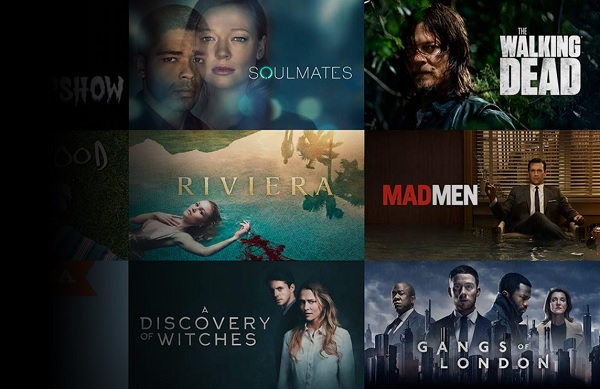
This week on TechHive: Why there’s no slo-mo in streaming

One of the central tenets of cord-cutting is that the more you expect it to be exactly like cable, the more disappointed you’ll be.
That’s especially true if you’re a sports fan. Between streams that lag behind broadcast TV, inconsistent 60-frames-per-second support, and the escalating price of regional sports, replicating the cable experience can be a challenge.
So far, however, one related issue has mostly crept along under the radar: I’m talking about frame-by-frame, slow-motion replays. They’re a staple on TiVo DVRs and some other cable boxes, but completely unavailable on streaming services today. Whether you subscribe to YouTube TV, Hulu + Live TV, Fubo TV, or any other live TV service, you’re limited to skipping ahead several seconds at a time, which means you can’t roll your own sports replays or rewind to precise moments in the action.
A lack of frame-by-frame control may not be a deal breaker for a lot of people, but I have heard from folks who say they can’t fathom cord-cutting without it. Unfortunately for them, the slo-mo status quo probably won’t change anytime soon. Read the full column on TechHive.
Weekly rewind
HBO Max with ads: The rumors were right; HBO Max’s ad-supported version will cost $10 per month when it launches next month, versus $15 per month for the existing ad-free version. Both tiers will have the same selection of content, with one notable exception: The version with ads won’t include new movies on the same day that they debut in theaters. (WarnerMedia has already indicated that it will discontinue same-day releases next year anyway.)
WarnerMedia is also promising that it’ll have “the lightest ad load in the streaming industry,” which is nice, though the company seems to be finding other ways to cram in advertising outside of commercial breaks. It’s promising “pause ads” that pop up when you get up for a break, along with “branded discovery,” which are essentially banner ads that follow you around the app’s menu system. If those sound like reasonable trade-offs for $5 per month in savings, you’ll be able to sign up in the first week of June.
The Disco-Warner merger: Speaking of WarnerMedia, corporate parent AT&T announced this week that it wants to merge the business with Discovery as a separate, standalone company. The deal, if regulators approve it, would essentially undo AT&T’s 2018 acquisition of Time Warner and establish an even larger media conglomerate to take on the likes of Netflix.
While AT&T never had much business owning HBO and a bunch of other cable channels to begin with, I’m worried that this new merger will once again lead to fewer choices and higher prices for cord cutters. As I argued over at Fast Company this week, we’ve seen too many instance already in which live TV bundles become more bloated and expensive post-merger. And in this particular instance, it’s unclear whether HBO Max and Discovery+ would continue to exist as separate services. HBO Max subscribers who don’t want to pay extra for Discovery’s content—and vice versa— may not get to make those choices once both companies are under the same roof.
Sling TV’s upcoming overhaul: If you’re Sling TV subscriber on Amazon’s Fire TV devices, you might’ve seen a message this week about a “brand new Sling app” coming soon. The company says it’s launching a redesign that’s simpler and more personalized, starting on Fire TV devices and rolling out to other platforms throughout 2021. Sling isn’t sharing any more details yet, but I expect that’ll change before long.
Sling’s subscriber numbers have been pretty much stagnant at around 2.4 million over the last year, though I’m not sure the clunky interface alone is to blame. While Sling’s attempts to keep prices down are noble—it splits channels into two base packages, and omits expensive local channels in most markets—people seem to be voting in favor of larger packages like YouTube TV and Hulu + Live TV. This is pure speculation, but I wouldn’t be surprised if the interface overhaul was a precursor to broader programming shake-ups.
More catch-up
- Rumor mill: Amazon wants to buy MGM for $9 billion.
- Related to this week’s column: Why live sports streams take longer to arrive than cable.
- Coming to Android TV this year: Transfer video between TVs, and get quick controls on Android phones.
- If WarnerMedia and Discovery merge, so might NBCUniversal and ViacomCBS.
Save more money

Amazon is currently knocking the price of AMC+ down to $1 per month for two months when you sign up through Prime Channels. The service, which includes ad-free access to AMC shows like The Walking Dead and Mad Men, normally costs $9 per month (and you’ll pay that price if you don’t cancel before the two months are up). After subscribing, you can access the service through the Prime Video app on pretty much every streaming platform.
A couple other deals worth noting:
- Roku’s early Memorial Day sale includes the Roku Streaming Stick+ for $40, Roku Ultra for $69, Roku Streambar for $99, and the Streambar-Subwoofer combo for $260.
- Verizon is offering two free months of Sling TV to wireless, Fios, and 5G home internet subscribers.
Thanks for reading!
Once again, I’m pleased to say that I’ve been diligently working through my pile of reader mail, and have just a few dozen or so outstanding messages waiting for me. If you’ve emailed me lately and I haven’t responded, hang tight! And of course, feel free to send your own cord-cutting questions and comments by replying to this email.
Lastly, if you’re wondering why I picked an image of curling for the top of the newsletter, it’s the best I could do for live sports at 9 a.m. But also, I kind of like curling.
Until next week,
Jared
